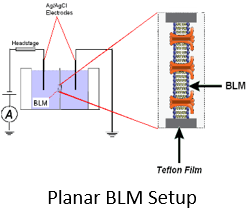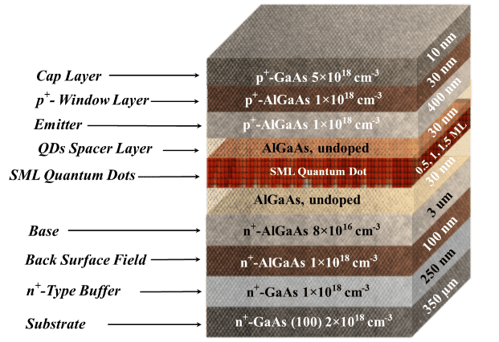Development and Characterization of Sub-Monolayer Quantum Dot (QD) IBSCs
Student: Najla Alnami
Degree: Ph.D., December 2019
Major Professor: Dr. Gregory Salamo
Research Area(s):
Microelectronics
Nanoscience & Engineering
Background/Relevance
- Experimental efforts towards fabricating high efficiency and low cost intermediate band solar cells (IBSCs) have not met the predictions of theoretical efficiency of 63%.
- A novel design of intermediate band solar cells is needed for increasing the solar cell conversion efficiency by increasing the solar cell photocurrent while preventing the reduction of open circuit voltage.
Innovation
- Developing and optimizing IBSCs based on sub-monolayer QDs.
- Investigating the behavior of the solar cell when the island size is varied, when the cells are doped at different doping concentrations, and when the number of sub-monolayer quantum dot (QD) stack are varied.
Approach
- Growing sub-monolayer QDs and optimizing the growth using MBE.
- Incorporate sub-monolayer QDs in IBSC structures.
- Fabricating the proposed IBSC structures using standard optical photolithography, wet etching, and metallization.
- Study the structural, optical, and electrical characteristics of the structure using: Atomic Force Microscopy, Transmission Electron Microscopy, Solar Power Conversion Efficiency measurement, External Quantum Efficiency measurement, PL measurement, and Absorption Spectroscopy.

Key Results
- Growing a reference sample without sub-monolayer QDs.
- Optimizing the fabrication process of the grown IBSCs.
- The designed sub-monolayer
- QD IBSC structure

Conclusions
-
The rapid increase in intermediate band solar cell efficiency is a promising sign of the possibility of developing a commercially practical solar cell system. The IBSC in this research is designed to overcome the current IBSC limitations.
Future Work
- Developing and optimizing the growth of sub-monolayer QDs.
- Investigating the behavior of the intermediate band when the sub-monolayer QD size is varied, the QDs are doped at different doping concentrations, the number of sub-monolayer QDs stack are varied.
- Studying the structural quality growth, electrical, and optical behavior of the proposed structure.
